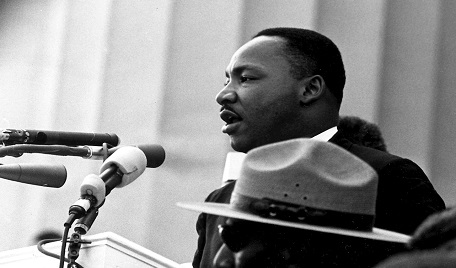 It was on this day in 1963 that Martin Luther King, Jr., gave his famous “I Have A Dream” speech as part of the March on Washington. So how much do you know about the speech and the events that led up to it?
It was on this day in 1963 that Martin Luther King, Jr., gave his famous “I Have A Dream” speech as part of the March on Washington. So how much do you know about the speech and the events that led up to it?
Link: Full Speech from the National Archives
The speech was delivered to an estimated 250,000 people who came to Washington, D.C., on August 28, 1963 to march for civil rights.
Here are 10 facts about the march and the events that led to the speech.
1. The official event was called the “March on Washington for Jobs and Freedom.” On June 11, 1963, President John F. Kennedy made a nationally televised address calling for a drive for more civil rights. That same night, NAACP leader Medgar Evers was murdered in Mississippi.
2. Marches had been proposed before the Kennedy speech and Evers’ killing, but the events forced the issue. Kennedy met with civil rights leaders such as King, Roy Wilkins, Whitney Young and student leader John Lewis about a proposed march. Kennedy signaled his approval publicly in July when he was assured it would be a peaceful event.
3. The March was not universally supported by activists. Prominent objectors included Malcolm X and Strom Thurmond. The organizers didn’t agree on all the issues, either, but they did agree that people should march together at the event.
4. It also wasn’t the first threatened March on Washington by civil rights leaders. In 1941, organizers were planning a march to demand desegregation in the U.S. military as World War II approached. But President Franklin Roosevelt averted the march by signing Executive Order 8802 in June, 1941, banning discrimination in the federal government and defense industries. .
5. Almost no one could clearly hear King’s speech. An expensive sound system was installed for the event, but it was sabotaged right before it. Attorney General Robert Kennedy enlisted the Army Corps of Engineers to fix the system.
6. William Edward Burghardt "W. E. B." Du Bois, the co-founder of the NAACP, died on the day before the event at the age of 95 in Ghana. Roy Wilkins asked the marchers to honor Du Bois with a moment of silence.
7. An estimated 250,000 people attended the March. People came from all over the country, and few arrests were reported.
8. There were 10 speakers on the official program for the public event at the Lincoln Memorial: All of them were men. Rabbi Joachim Prinz spoke right before King. There were no speakers after King, as organizers led the audience in a pledge and gave a benediction.
9. King almost didn’t give the “I Have a Dream” part of the “I Have A Dream” speech. Singer Mahalia Jackson urged King to tell the audience “about the dream,” and King went into an improvised section of the speech.
10. The person who wound up with the typewritten speech given by King is retired college basketball coach George Raveling. A college basketball player at Villanova, organizers saw Raveling in the crowd and asked him to be a bodyguard on stage. He stood next to King on stage, and decided to ask him for the paper copy of the speech. King obliged and Raveling has the speech locked away in a safe place, with no intention of selling it.






